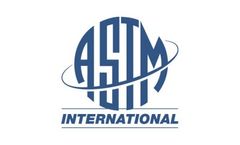Fatigue And Deformation Testing Articles & Analysis: Older
6 news found
The shear and bending fatigue tests are used to determine the effect of variations in material, geometry, surface condition, stress, and so forth, on the fatigue resistance of coated metallic materials subjected to direct stress for up to 107 cycles. These tests may be used as a relative guide to the selection of coated materials for service under condition of repeated stress. In order ...
This guide is intended to provide guidance for the specification and selection of fabrication methods for silicones used in medical devices. It also provides guidance relative to testing that might be done to qualify lots of acceptable material, based on desired performance properties. Silicone manufacturers supplying material ...
This specification covers total knee replacement (TKR) prostheses used to provide functioning articulation by employing femoral and tibial components, allowing a minimum of 110' of flexion to high flexion. Replaceable components of modular designs, for example, tibial articulating surfaces and all components labeled for or capable of being used with cement, regardless of ...
1. Scope 1.1 This terminology contains definitions, definitions of terms specific to certain standards, symbols, and abbreviations approved for use in standards on fatigue and fracture testing. The definitions are preceded by two lists. The first is an alphabetical listing of symbols used. (Greek symbols are listed in accordance with their spelling in ...
Withdrawn Rationale: This practice covers a method for the fatigue testing of metallic stemmed femoral components used in hip arthroplasty. The described method is intended to be used for evaluation in comparisons of various designs and materials used for stemmed femoral components used in the ...
A4.1.1 Depending on its design and its use in the overall construct, the joint of an external skeletal fixator needs to transmit one or more components of loading (tension, compression, torsion, or bending, or a combination thereof) between the elements it grips (anchorage elements or bridge elements), without either the connector itself or its gripping interface(s) ...

